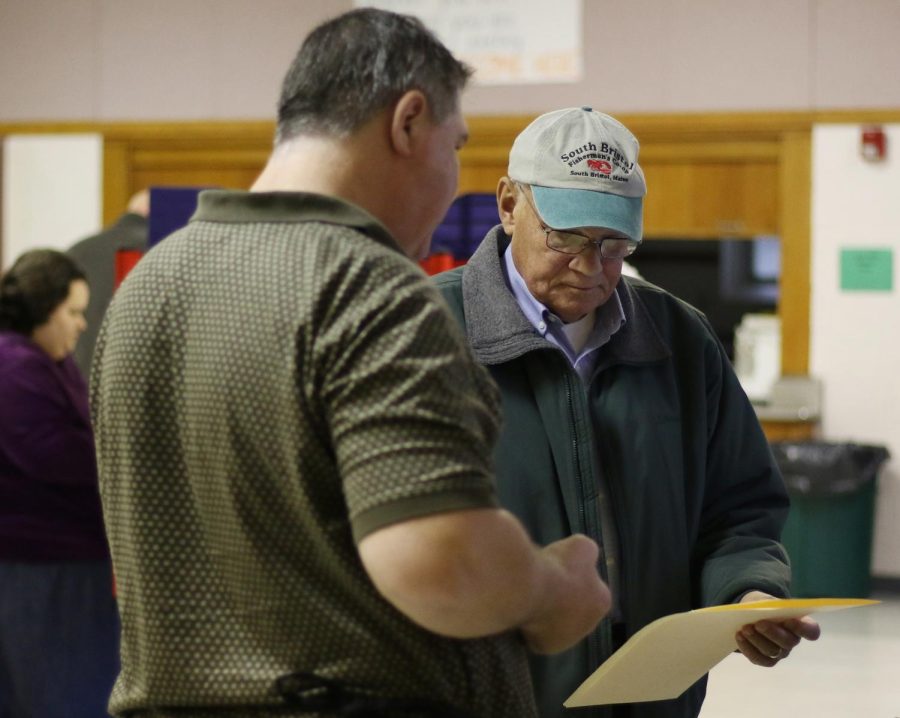Kent voters have mixed reactions to election results
November 8, 2017
Despite the low turnout, those who did show up to vote in Tuesday’s 2017 general election decided for or against a handful of controversial issues on the ballot.
The voter turnout in Portage County for the 2017 general election dropped to 32 percent, down from 44 percent in 2015, according to the Portage County Board of Elections.
In Portage County, two of the most controversial issues failed.
Issue 8, known formally as the Kent City Health and Wellness Center Bond, failed with 2,257 votes against and 1,554 votes in favor.
The bond hoped to approve funding for the construction, furnishing, equipping and improving of a new Health and Wellness Center in the city. It could bring roughly $1 million annually for 28 years beginning in 2018.
The proposed space would have included 72,000 square feet of gym space, an indoor turf field, elevated walking areas, exercise equipment and community health spaces — similar to the Kent State Student Recreation and Wellness Center.
Voters also nixed Issue 9, which could declare Kent a sanctuary city. The issue failed with 2,206 opposing votes and 1,622 votes in favor.
The issue would have changed the language in Kent’s charter to formally declare it a sanctuary city, limiting its cooperation with federal authorities attempting to enforce immigration law. The intent is to protect those in the country illegally from fears of deportation.
Supporters of the bill argue the sanctuary city status encourages immigrants to report more crimes, use health services and enroll their children in school because they would feel safe in their communities.
Vivien Sandlund, a member of Kent Citizens of Democracy, the group behind the issue, said she was initially disappointed in the election results.
“It was a long, ongoing struggle. … But we made people aware of the struggles of immigrants, especially illegal immigrants,” she said. “We now have a group of organizers who are dedicated to raising awareness in order to make our community safer for them.”
Some opposers of the bill — who proved to be the majority — claim the new language is unsafe and puts community members in danger. They also argue the formal title could result in losing federal funds, despite it being ruled unconstitutional.
“This is for the safety of the community,” said Joe Becker, a member of Kent Citizens Against Becoming a Sanctuary City. “The issue is not as black and white as some people believe it is, and it will be better for Kent in the long run.”
Nearly 80 percent of Ohioans rejected Issue 2, the controversial Drug Price Standards Initiative, which has been flooding commercials and billboards statewide. It would have required state agencies to negotiate with drug providers for equal or lower prices than those companies charge the U.S. Department of Veterans Affairs.
Pharmaceutical companies opposed to the issue raised more than $60 million to defeat the proposal, a state record.
“I’m very grateful,” said Amanda Adams, a freshman geology major and a home health care provider. “It would’ve affected a lot of my clients because a lot of them are on Medicaid. It would’ve raised their prices.”
Issue 1 didn’t have a similar fate. The initiative, known as the Crime Victim Rights Initiative, passed with almost 83 percent of the vote in Ohio.
The new legislation, also known as Marsy’s Law, will alter the Ohio Constitution’s Second Amendment to require that crime victims be notified and consulted on developments in their cases.
“I just quickly read it over and knew it was the right call, to give victims the same amount of rights as the criminals,” said Morgan Grubaugh, a freshman political science major.
Rachel Duthie is the features editor. Contact her at [email protected].
Jenna Kuczkowski contributed to this story. Contact her at [email protected].

























